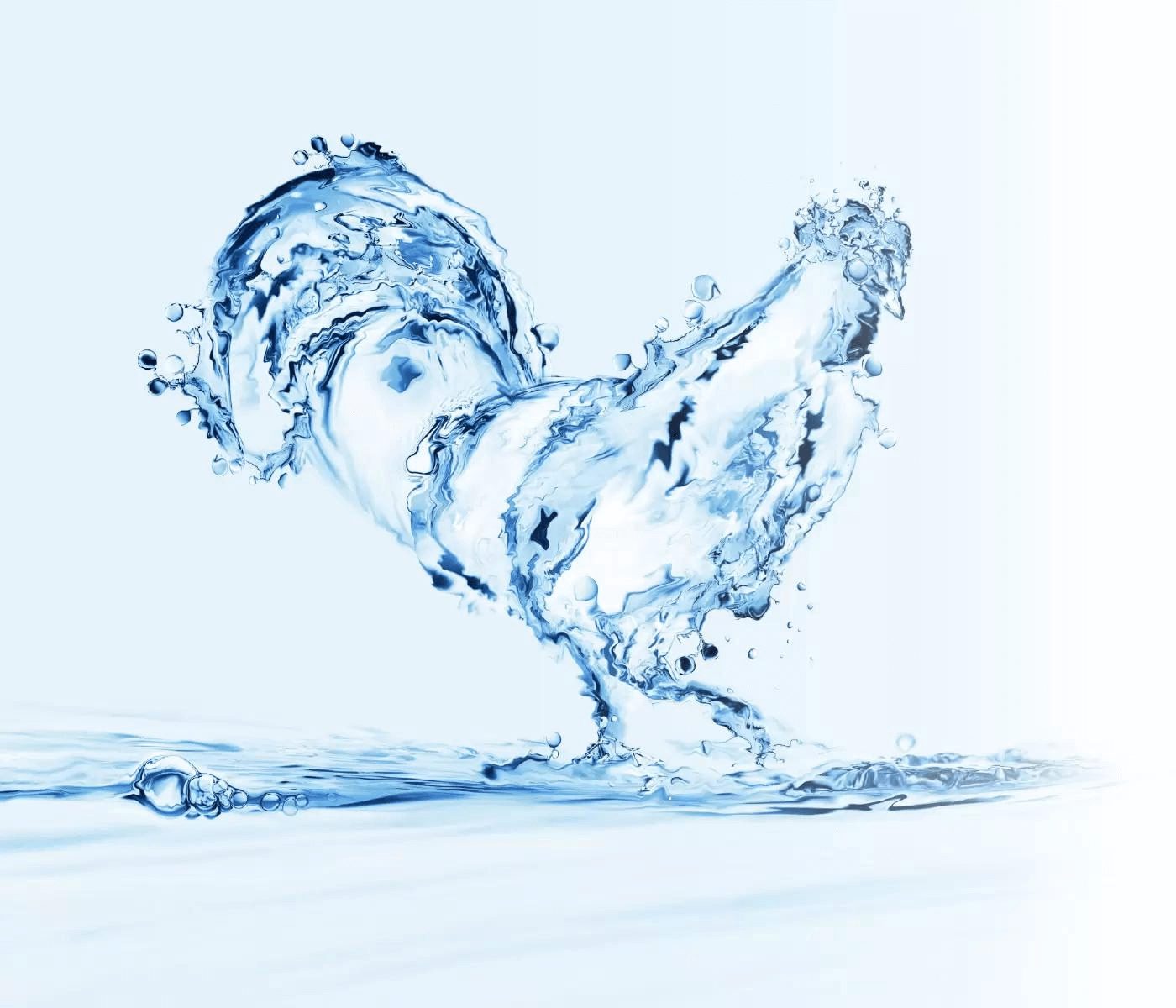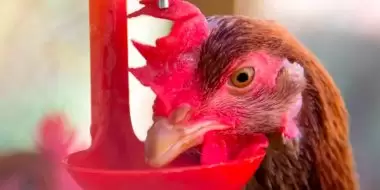 15 Jul 2024
15 Jul 2024
Water in Poultry Farming
Many researchers and professionals related to poultry farming have emphasized the importance of this nutrient in the development, health, and well-being of animals.
The pursuit of protein production linked to the “One Health” concept has increased our preventive actions to ensure the integrity and maintenance of flock health.
Water quality is a determining factor for this success; however, it is often forgotten or neglected.
In 2013, the OIE defined the foundations of animal welfare, establishing standards for health, comfort, nutrition, the ability to express natural behavior, and freedom from injuries such as fear, pain, and anxiety.
Currently, we do not have specific legislation from MAPA regarding water quality standards in poultry farming. All water quality standards and guidelines are primarily linked to CONAMA or ANVISA.
Water is a crucial component for poultry farming as it performs vital functions in birds’ bodies, including digestion, nutrient transport, body temperature regulation, and hydration maintenance.
Access to potable water is essential for birds to develop their productive potential. Microbiological contamination, physico-chemical composition, and water temperature are factors that can negatively affect the performance and health of birds.
Therefore, constant monitoring is necessary on properties, as all these parameters can change throughout the year.

The hydrogen percentage (pH) of the water is an important monitoring factor. It is essential to regularly adjust the pH to ensure it remains within the appropriate levels (6.0-7.0).
Alkaline water can interfere with protein digestion, affecting nutrient absorption and increasing the incidence of enteric problems.
Similarly, supplying water with an extremely acidic pH can irritate the birds’ digestive tract, causing mucosal damage, reducing nutrient absorption, and leading to growth and performance issues, as well as metabolic disturbances related to decreased bone matrix mineralization. In addition to these physiological interference factors in birds, pH is also directly linked to efficient chlorination.
Chlorine is frequently used to control pathogenic agents, such as bacteria, fungi, and viruses present in water. Among oxidizing agents, it remains the most cost-effective product for water disinfection. Chlorine’s biocidal activity varies with the water’s pH.
A pH between 4-7 allows for more effective chlorine dissociation, ensuring better oxidation capacity against microorganisms in the water. This occurs because the dissociated form of chlorine with the highest biocidal capacity is hypochlorous acid (HClO).

At higher pH levels, the available hydrogen proton percentage in the water decreases, leading to a higher concentration and dissociation of hypochlorite ions (OCl-), which have low biocidal capacity.
For example, at pH 6, chlorine can eliminate more than 99% of bacteria in less than 30 seconds, while at pH 8, the same level of elimination can take over 16 minutes.
It is important to remember that improper use of chlorine can form potentially toxic by-products.
Chlorine is a gas, and stabilizing it in liquid or solid form (tablets) requires the use of other products such as cyanuric acid (dichlor and trichlor), sodium hydroxide (sodium hypochlorite), and calcium (calcium hypochlorite).
Sodium hypochlorite is more soluble in water, making it generally easier to apply in drinking water. It dissolves quickly and releases a controlled amount of chlorine in the water.
However, even though sodium hypochlorite solution can be obtained in different concentrations (10-12%), it is an extremely volatile product with a short shelf life, leading to significant concentration fluctuations.

On the other hand, calcium hypochlorite is typically used in concentrations of 65% to 70%, meaning the amount needed to disinfect the water is significantly less than that required for sodium hypochlorite.
Using calcium hypochlorite has some advantages over sodium hypochlorite. For example, while sodium hypochlorite generates sodium hydroxide as a dissociation by-product, calcium hypochlorite generates only calcium, reducing toxicity risks and improving water palatability for consumption.
The use of organic chlorines (dichlor and trichlor) also deserves mention. These are chlorines with slower biocidal activity, meaning they require contact time (minimum 30 minutes) and present toxicity risks due to the high concentration of cyanuric acid in their dissociation.

ORP (Oxidation-Reduction Potential) is also an important parameter for assessing water quality in poultry production. Water’s ORP is influenced by factors such as:
If the water’s ORP is low (below 650 mV), it indicates reduced oxidation capacity, which can lead to the accumulation of bacteria and other pathogenic microorganisms that affect bird health.

Conversely, if the water’s ORP is high (above 670 mV), it indicates that the water has oxidizing activity and, consequently, biocidal capacity. Therefore, it is important to control the ORP of water supplied to birds and choose appropriate treatment systems to maintain a suitable ORP, correlating chlorine concentration and pH.
Another factor to consider is the conservation and cleaning of water reservoirs and pipelines. This step is often forgotten or neglected in biosecurity programs, compromising the quality of water supplied to flocks.
The presence of biofilms inside pipelines can significantly increase the risk of health challenges from various microorganisms.
Therefore, many factors must be observed regarding the quality of water used for poultry hydration, from water sources, storage, distribution, temperature, pH, physico-chemical composition, and the type of oxidizing agent used.
 Article originally published in aviNews Brazil – Water in Poultry Farming
Article originally published in aviNews Brazil – Water in Poultry Farming
Subscribe now to the technical magazine of animal nutrition
AUTHORS

Hybrid Rye Potential in Laying Hen Feed Rations
Gwendolyn Jones
A day in the life of phosphorus in pigs: Part I
Rafael Duran Giménez-Rico
Use of enzymes in diets for ruminants
Braulio de la Calle Campos
Minerals and Hoof Health in the Pregnant Sow
Juan Gabriel Espino
Impact of Oxidized Fats on Swine Reproduction and Offspring
Maria Alejandra Perez Alvarado